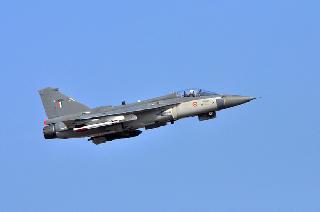But to take 40 years and still not ready to be inducted surely not the best effort there mate? Wouldn't you say mate?
40 years is a massive exaggeration wouldn't you say mate? I mean I like to harp on other countries failures as much as the next person, but you have to consider a few things before harping on a country trying to improve their infrastructure and stature on the world stage in a peaceful manner.
1.)
No infrastructure to build fighter jets - Jets require tremendous amounts of infrastructure pieces to design, develop, and produce. You need Wind-tunnels, Turbine testing facilities, weapons testing facilities etc... Like the saying goes, you need the Tools to build the tool that helps you build the tool you want. E.g. If I wanted to build a wrench, then I'd need to build a furnace or start a fire first... create a pot capable of withstanding high temperatures, then build the mold into which I pour the molten metal to finally get a wrench.
India had none of that, but built it.
2.)
No talent to build fighter jets - In order to build a jet, you need top end talent (engineers, scientists etc...), these don't just grow on trees. In order to acquire this type of talent, you either import it from other countries (Like Taiwan did), or you improve your Education System to produce this type of talent locally. If you do the former (importing), then it will help in the short run, but not in the long run. What happens when those people get older? There's no one to teach the next generation, that's why you have to build your Educational Infrastructure if you want to be a leader one day in any engineering/science field. (Give a man a fish, he'll eat for a day, teach a man to fish, he'll eat for a lifetime).
India had none of this either... but India built this (I was reading some literature last night published by Lee Kuan Yew where he states that india increased it's literacy rate from about 12% during the occupation of the Brits, to around 74% now... that's 74% of 1.2 billion people... impressive).
3.)
No money to build fighter jets - But before you can do any of the above, you need to make sure you fix the economy of your country. You have two options again... either re-direct funds meant for improving standards of living to the defense industry, or you increase the money to improve the infrastructure and the quality of life of your people so they work harder and bring in money to your nation. India did the latter (taking notes from the failures of the North Koreans and the Soviet Union).
India also built it's economy into a power-house..
So in 24 years, they did the following:
1.) Built their economy from the ground up and turned it into a work-horse.
2.) Improved the infrastructure of their country
3.) Improved the knowledge-base (students, schools, education etc..)
4.) Improved the quality of life for their people.
5.) Built all the R&D and production centers needed to built jets, trains, planes etc... you name it.
6.) Built a fighter jet from scratch.
7.) Fought a war
8.) Worked through sanctions.
I can identify similar traits with the Chinese... they improved even more so than India.. Matter of fact so has every other Asian nation... But this begs the question, what has Pakistan done in the past 24 years? Nothing.
And you want the rest of the world to believe you have the capability to build fighter jets from scratch? Pakistan putting together a JF-17 from parts bought from China and claiming it to be a indigenous fighter is like me going to IKEA, buying a table and putting it together and calling myself a carpenter. So keep harping on other countries minor inadequacies , because while you're laughing/nit-picking they're moving ahead in the world while your country stagnates.





 , First know your own components.
, First know your own components.
 And you say you have no intentions, hilarious.
And you say you have no intentions, hilarious.




